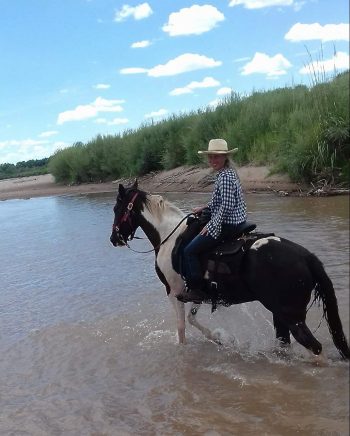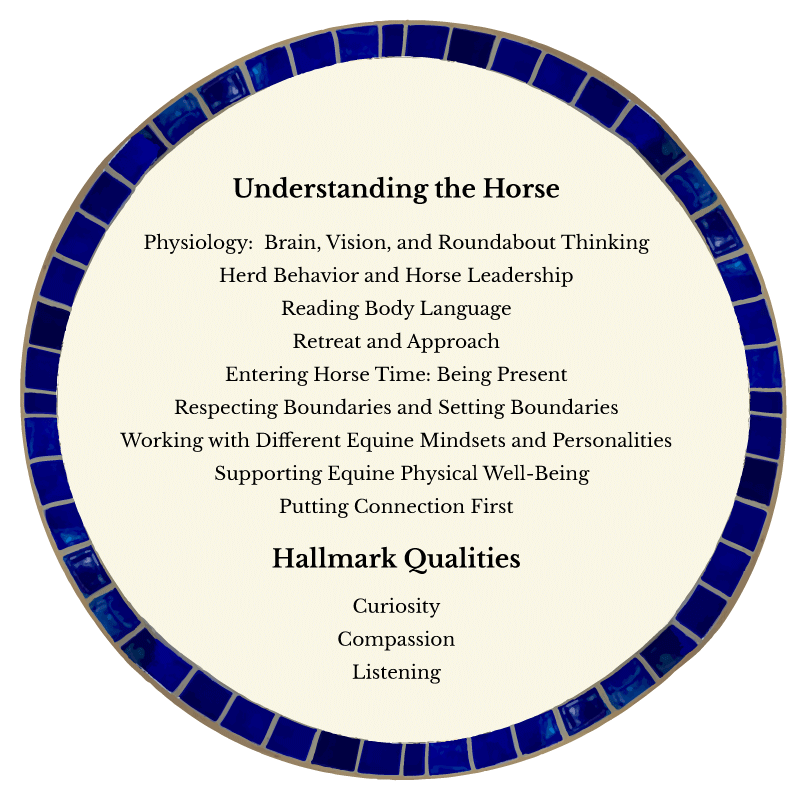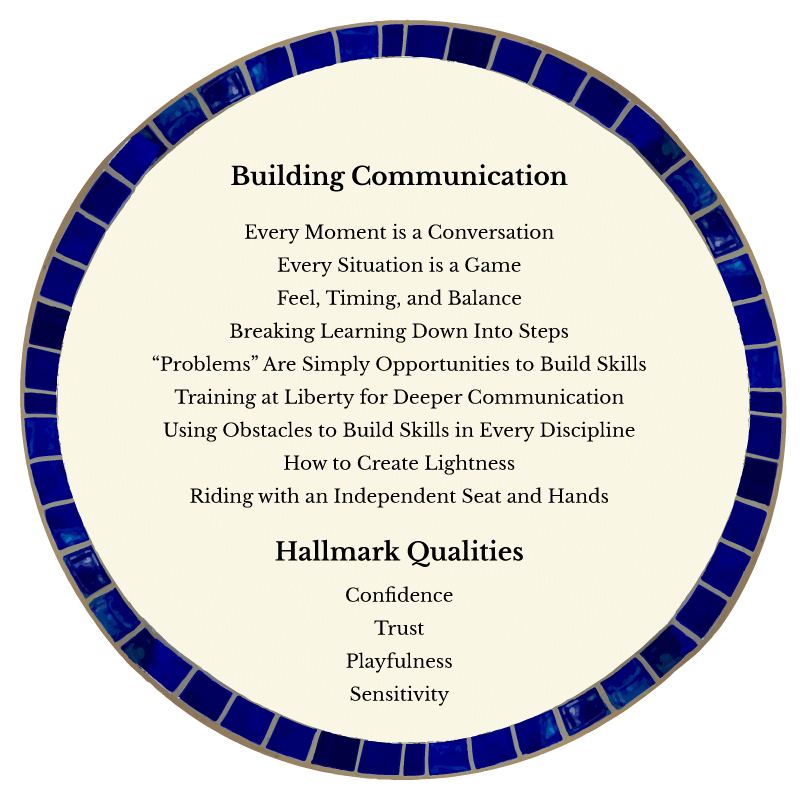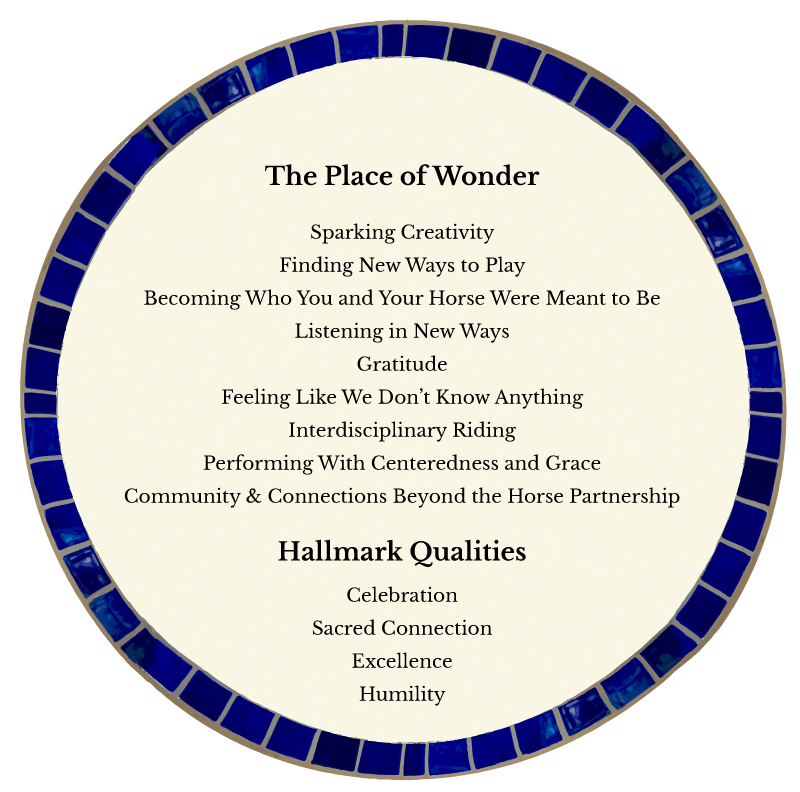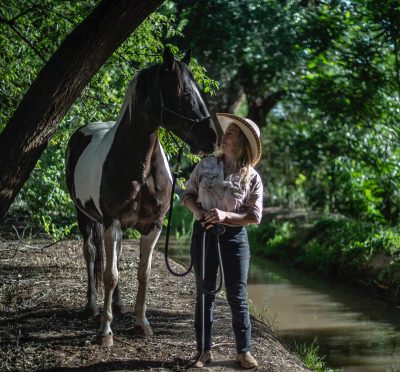I ride and train in both English and Western. I’ll guide you as we address what you want to learn and solve problems you’re encountering. I’ll always be looking for what you and the horse need as I help you and your horse grow happily and safely. As a former competitor, I have high standards, and I’ve learned how to pursue excellence without compromising our relationships with horses.
I work from the viewpoint that horses need the same things humans do: connection, compassion, understanding, and growth/challenges/play. When a horse does something we don’t like, they are saying without words how they feel and what they need. When we learn how to read their language, ie their body language, we can flow into conversation with them and figure out problems, help everyone feel comfortable, and do tons of fun stuff.
I incorporate concepts and methods from neuroscience, meditation traditions, learning theory, classical dressage, “natural horsemanship,” and trauma treatment. I continually learn and experiment with methods from living and past trainers, as well as developing techniques based on my own experiences. Horsemanship is an art, a science, and a never-ending journey.
Sometimes the horse world can be pretty judgy, and we can feel self-conscious or nervous: “Am I doing it right?” I love providing people a place to experiment and grow their most visionary selves. I like to say that there are always at least 3 good ways to do anything with horses, and I’m focused on building an inclusive community with enthusiastic, supportive, open-minded people who love horses.
Horses are drastically different from people. As prey animals, their brains and eyes function differently from ours. They think differently and prioritize other things than we do. When we learn how a horse thinks, what a horse needs, and what motivates them, everything changes. We earn their trust and unleash their innate sense of fun, play, curiosity, and connection, thus nurturing a willing, safe partner who wants to be with us and learn with us.
When we learn how to be present, centered, and clear, our communication transforms. We learn how to create places where horses feel safe. As we get better at seeing the cues horses offer us, we learn to talk with them in a way that makes sense to them.
Often, we find that the obstacle preventing progress is not the horse; it’s ourselves. And the patience we need is not just for the horse; we need to be patient with ourselves, too. These essential skills of patience, mindfulness, and self-compassion are not only wonderful for our work with horses; they’re transformative for our lives, too.
Horsemanship is just a series of conversations – conversations that take place through touch, body language, and energy. As we improve our communication skills, we have more profound and complex conversations.
At first our conversations might be simply about putting a halter on or riding a circle, but eventually they include things like inviting a horse to come running to us from a distance, riding in collection, racing or roping, or riding bridleless. “Problems” with horses are important opportunities to build our conversational skills.
In spite of our differences, humans and horses share a basic need – connection. As we meet this need with each other in ever deeper and more creative ways, we dip into the waters of inspiration, joy, and peace.
When we’re at one with our incredibly beautiful, delicate, and strong animal partner, we enter into connection with the sacred, and all of life. This place of wonder is available to a beginning rider or a young horse, as well as a rider or horse with lots of skills and experience. The more we build our skills, the more we’re able to co-create this magical place with horses.
